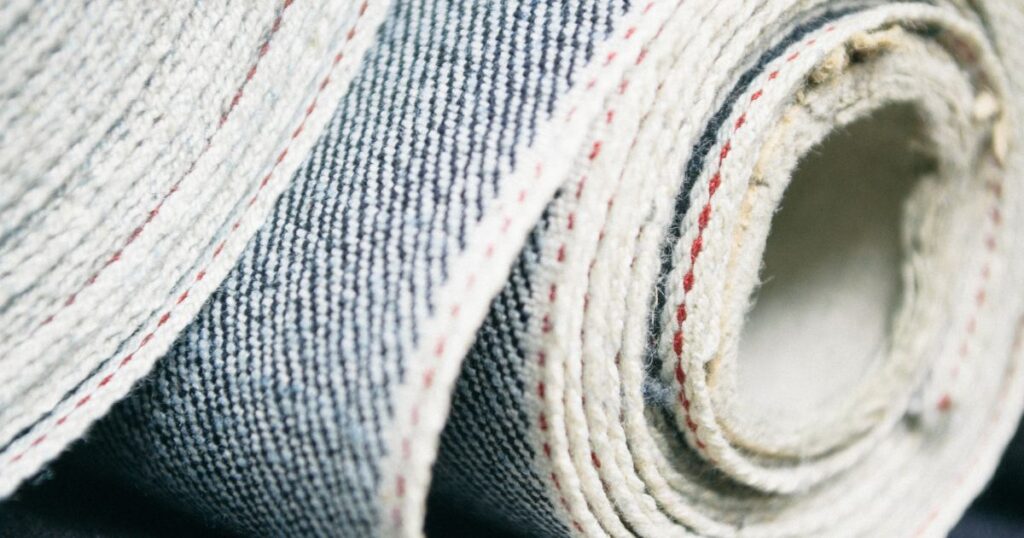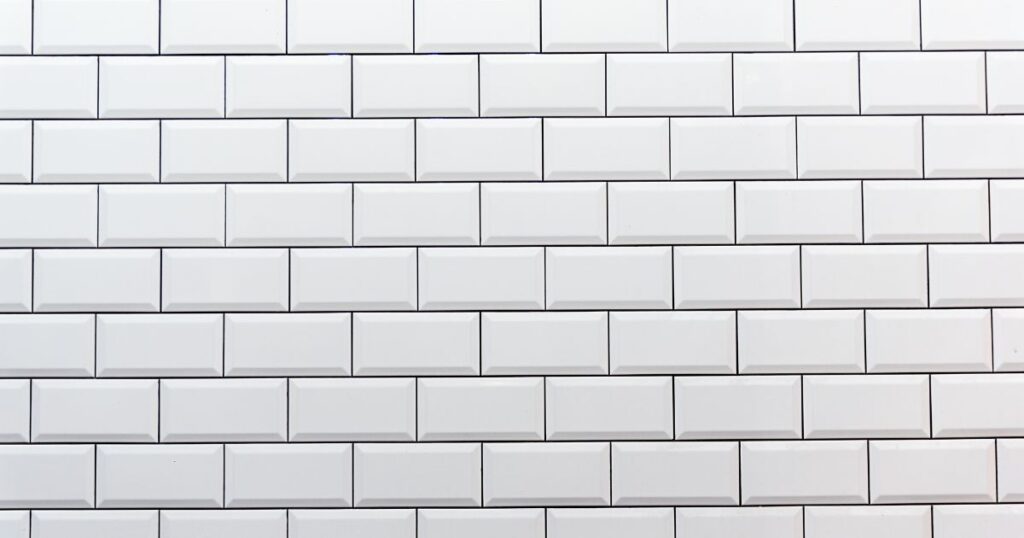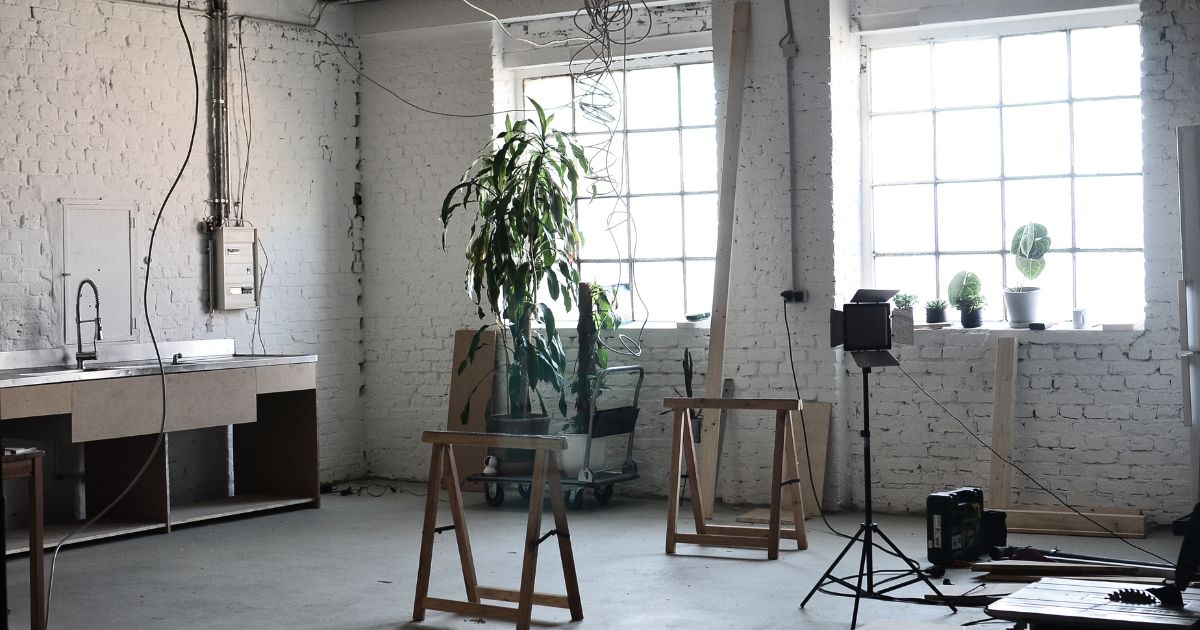Basement renovation has become increasingly popular among Canadian homeowners in recent years. Many houses across the country, from the coastal regions of British Columbia...
Kitchen Renovation Ideas That Won’t Go Out of Style

The kitchen is often called the heart of the home, and for good reason. It’s where families gather, meals are prepared, and memories are made. As such, a well-designed kitchen can significantly increase your home’s value and enhance your daily living experience. However, with design trends constantly evolving, it’s crucial to focus on renovation ideas that stand the test of time.
In this post, we’ll explore timeless kitchen renovation ideas that seamlessly blend style and functionality. These concepts are designed to ensure that your kitchen remains both beautiful and practical for years to come. By investing in these enduring design elements, you can create a space that not only meets your current needs but also maintains its appeal well into the future.
Our focus will be on renovation ideas that transcend fleeting trends, offering a perfect balance of classic aesthetics and modern convenience. Whether you’re planning a complete kitchen overhaul or looking to make strategic updates, these timeless ideas will help guide your renovation journey, ensuring that your investment pays off in both the short and long term.
Let’s dive into these evergreen kitchen renovation concepts that promise to keep your space fresh, functional, and fashionable for years to come.
Why Timeless Kitchen Design Matters

When it comes to kitchen renovation, opting for timeless design over fleeting trends can make a significant difference in both the short and long term. Here’s why choosing classic, enduring designs matters:
Longevity and Value: Timeless kitchen designs have staying power. Unlike trendy options that may look dated within a few years, classic designs maintain their appeal over decades. This longevity translates to better value for your investment, as you won’t feel the need to renovate again in the near future.
Broad Appeal: Classic designs tend to have wider appeal, which is crucial if you’re considering selling your home. A timeless kitchen is more likely to attract potential buyers across different tastes and preferences, potentially increasing your home’s resale value.
Flexibility: Timeless designs provide a versatile backdrop that can easily adapt to changing styles. You can update small elements like hardware or decorative items without needing to overhaul the entire kitchen, allowing for easy refreshes over time.
Cost-Effectiveness: While trendy designs might require frequent updates to stay current, timeless kitchens need less frequent renovations. This can lead to significant cost savings in the long run.
Emotional Satisfaction: A classic, well-designed kitchen can provide lasting satisfaction. You’re less likely to experience “renovation regret” or feel that your kitchen looks outdated shortly after the renovation.
Ease of Maintenance: Timeless designs often prioritize functionality alongside aesthetics. This focus on practicality usually results in a kitchen that’s easier to maintain and use on a daily basis.
Sustainability: By choosing designs that last, you’re also making a more environmentally friendly choice. Fewer renovations mean less waste and fewer resources used over time.
In essence, embracing timeless kitchen design is about creating a space that remains beautiful, functional, and relevant for years to come. It’s an approach that balances aesthetic appeal with practical considerations, ensuring that your kitchen continues to be a joy to use and a valuable asset to your home long after the renovation is complete.
Classic Color Palettes

The color palette you choose for your kitchen plays a crucial role in creating a timeless aesthetic. Neutral color schemes have long been favored for their versatility and enduring appeal. Let’s explore some classic color options and how they can be effectively used in your kitchen renovation:
White:
- Timeless Appeal: White kitchens have been popular for decades and show no signs of going out of style.
- Versatility: White can be paired with virtually any accent color or material.
- Brightness: It reflects light, making spaces feel larger and more open.
- Examples:
- White cabinets with a marble countertop for a luxurious look
- White subway tiles paired with stainless steel appliances for a clean, modern feel
Grey:
- Sophisticated Choice: Grey offers a contemporary yet classic look.
- Range of Tones: From light dove grey to deep charcoal, there’s a shade for every style.
- Complementary: Works well with both warm and cool color accents.
- Examples:
- Light grey cabinets with white quartz countertops for a subtle contrast
- Charcoal grey island paired with white perimeter cabinets for depth
Beige:
- Warmth: Adds a soft, welcoming feel to the kitchen.
- Neutral Base: Provides a great backdrop for both bold and subtle accents.
- Natural Look: Pairs well with wood tones and natural materials.
- Examples:
- Beige cabinets with dark wood floors for a cozy, traditional feel
- Beige walls with white cabinets and brass hardware for a warm, elegant look
Pairing Neutral Colors with Materials and Finishes:
- Wood:
- White cabinets with a rich walnut island for contrast
- Grey cabinets with light oak flooring for balance
- Metal:
- Beige walls with copper accents for a warm, inviting atmosphere
- White cabinets with brushed nickel hardware for a sleek look
- Stone:
- Grey cabinets with a white marble backsplash for elegance
- White cabinets with a beige limestone countertop for a natural feel
- Glass:
- Any neutral color paired with glass-front cabinets or a glass tile backsplash adds depth and interest
- Textiles:
- Use colorful or patterned textiles (curtains, rugs, chair cushions) to add pops of color to a neutral base
Remember, while the base palette remains neutral, you can introduce color through easily changeable elements like accessories, artwork, or even small appliances. This approach allows you to update the look of your kitchen without major renovations, ensuring your space remains fresh and personally appealing while maintaining its timeless foundation.
High-Quality, Durable Materials

Investing in high-quality, durable materials is crucial for creating a kitchen that stands the test of time. These materials not only offer longevity but also maintain their appeal over the years. Let’s explore some key elements:
Countertops: Investing in premium countertop materials can significantly enhance your kitchen’s functionality and aesthetics.
- Granite:
- Durability: Extremely hard and resistant to scratches and heat.
- Uniqueness: Each slab has a unique pattern, adding character to your kitchen.
- Longevity: With proper sealing, can last for decades.
- Quartz:
- Low Maintenance: Non-porous surface resists staining and doesn’t require sealing.
- Consistency: Engineered for uniform color and pattern.
- Durability: Highly resistant to scratches, chips, and stains.
- Marble:
- Timeless Beauty: Offers a classic, luxurious look.
- Heat Resistant: Excellent for baking areas.
- Patina: Develops a unique character over time.
Cabinetry: Solid wood cabinetry is a hallmark of high-quality kitchen design.
- Durability: Can last for generations with proper care.
- Versatility: Can be refinished or repainted to update the look.
- Types:
- Oak: Strong and durable with a prominent grain.
- Maple: Smooth, consistent grain ideal for modern designs.
- Cherry: Rich, warm tones that deepen over time.
- Customization: Easily modified for changing needs or styles.
- Value: Adds significant value to your home.
Appliances: Stainless steel appliances offer a classic and sleek appearance.
- Timeless Appeal: Has been popular for decades and likely to remain so.
- Versatility: Complements various design styles, from traditional to modern.
- Durability: Resistant to corrosion and easy to clean.
- Consistency: Provides a cohesive look across different brands.
- Resale Value: Often preferred by potential homebuyers.
Additional Considerations:
- Flooring: Consider durable options like hardwood, high-quality tile, or luxury vinyl plank.
- Backsplash: Classic materials like subway tile or natural stone offer lasting appeal.
- Hardware: Choose quality metals like brass, nickel, or stainless steel for longevity.
By investing in these high-quality, durable materials, you’re not just creating a beautiful kitchen – you’re building a space that will maintain its functionality and appeal for years to come. While the initial cost may be higher, the long-term value in terms of durability, maintenance, and timeless aesthetics makes it a wise investment for your home.
Functional Layouts

Creating a functional kitchen layout is crucial for both efficiency and longevity in design. Two key concepts have stood the test of time in kitchen design: the work triangle and open-plan layouts with islands. Let’s explore these in detail:
The Kitchen Work Triangle:
The kitchen work triangle is a concept that dates back to the 1940s but remains relevant today. It’s based on the idea of positioning the three main work areas in a triangular layout for maximum efficiency.
- Components:
- Sink (cleaning/preparation)
- Stove (cooking)
- Refrigerator (storage)
- Benefits:
- Efficiency: Minimizes unnecessary movement while cooking
- Flow: Creates a natural workflow in the kitchen
- Versatility: Can be adapted to various kitchen shapes and sizes
- Guidelines:
- Each leg of the triangle should be between 4 and 9 feet
- The total of all three sides should be between 13 and 26 feet
- No major traffic patterns should intersect the triangle
- Modern Adaptations:
- In larger kitchens, consider creating multiple work triangles
- Incorporate other frequently used areas like a microwave or prep sink
Open-Plan Kitchens and Island Workstations:
The popularity of open-plan kitchens with islands has grown significantly and shows no signs of waning. This layout offers numerous benefits that align with modern lifestyles.
- Advantages of Open-Plan Kitchens:
- Social Interaction: Allows the cook to interact with family or guests
- Spaciousness: Makes the kitchen and adjoining areas feel larger
- Light: Enhances natural light flow throughout the space
- Versatility: Easily adapts to changing needs and lifestyles
- Benefits of Kitchen Islands:
- Additional Workspace: Provides extra prep area
- Storage: Offers space for cabinets or open shelving
- Seating: Can include bar stools for casual dining or socializing
- Appliance Integration: Can house sinks, cooktops, or dishwashers
- Visual Appeal: Serves as a focal point in the kitchen
- Considerations for Open-Plan Kitchens with Islands:
- Traffic Flow: Ensure there’s enough space around the island (typically 36-42 inches)
- Proportions: The island should be sized appropriately for the room
- Functionality: Determine the primary purpose of your island (prep, dining, storage) and design accordingly
- Lighting: Incorporate task lighting over the island
- Adapting the Work Triangle:
- In open-plan kitchens, the island often becomes part of the work triangle
- Consider a prep sink or cooktop on the island to maintain efficiency
By combining the time-tested efficiency of the kitchen work triangle with the modern appeal of open-plan layouts and islands, you can create a kitchen that’s not only functional but also adaptable to future needs. This approach ensures that your kitchen remains both practical and stylish for years to come, making it a worthy investment in your home’s long-term value and livability.
Subtle and Timeless Cabinetry

Cabinetry plays a crucial role in defining the overall look and feel of a kitchen. When aiming for a timeless design, certain styles and approaches have proven to stand the test of time. Let’s explore two key aspects of timeless cabinetry: Shaker-style cabinets and custom or semi-custom options.
Shaker-Style Cabinets:
Shaker-style cabinets have been a popular choice for decades, and their appeal shows no signs of waning. Their enduring popularity can be attributed to several factors:
- Simplicity:
- Clean lines and minimal ornamentation
- Five-piece door with a recessed center panel
- Versatile design that complements various kitchen styles
- Timeless Appeal:
- Bridges the gap between traditional and modern aesthetics
- Easily adaptable to changing design trends
- Versatility:
- Works well with different hardware styles
- Can be painted or stained in various colors
- Functionality:
- Sturdy construction
- Easy to clean and maintain
- Historical Significance:
- Rooted in the Shaker movement’s principles of simplicity and functionality
Custom and Semi-Custom Cabinets:
Opting for custom or semi-custom cabinets offers numerous benefits that contribute to a timeless kitchen design:
Custom Cabinets:
- Tailored Fit:
- Designed to exact specifications of your space
- Maximizes storage and functionality
- Unique Design:
- Ability to create one-of-a-kind features
- Incorporates personal style preferences
- Quality Materials:
- Choice of high-quality woods and finishes
- Potential for better durability and longevity
- Problem-Solving:
- Addresses unique spatial challenges
- Accommodates specific storage needs
Semi-Custom Cabinets:
- Flexibility:
- Offers more options than stock cabinets
- Allows for some customization in size and style
- Cost-Effective:
- More affordable than fully custom options
- Still provides a tailored look
- Quicker Installation:
- Faster than custom cabinets
- Maintains quality and personalization
Benefits of Custom and Semi-Custom Options:
- Optimized Storage: Designed to meet specific storage needs
- Improved Functionality: Can incorporate specialized features (e.g., pull-out spice racks, built-in organizers)
- Cohesive Design: Ensures a consistent look throughout the kitchen
- Long-Term Value: High-quality construction can increase home value
- Personalization: Reflects individual style while maintaining timeless appeal
Considerations When Choosing Cabinetry:
- Material Quality: Opt for solid wood or high-grade plywood for durability
- Hardware: Choose classic styles that complement the cabinet design
- Finishes: Select neutral colors or natural wood tones for longevity
- Proportions: Ensure cabinet sizes are balanced with the overall kitchen layout
By combining the timeless appeal of Shaker-style cabinets with the tailored approach of custom or semi-custom options, you can create a kitchen that is both classically beautiful and uniquely suited to your needs. This approach ensures that your cabinetry will remain stylish and functional for years to come, contributing to the overall timeless design of your kitchen.
Subway Tile Backsplashes

Subway tiles have become a quintessential element in timeless kitchen design. Their enduring popularity stems from their clean lines, versatility, and ability to complement various kitchen styles. Let’s explore the appeal of subway tiles and creative ways to incorporate them into your kitchen design.
The Appeal of Subway Tiles:
- Classic Design:
- Originated in early 20th century New York City subway stations
- Rectangular shape, typically 3×6 inches, though sizes can vary
- Simplicity:
- Clean, unfussy appearance
- Adds visual interest without overwhelming the space
- Versatility:
- Complements both traditional and modern kitchen styles
- Available in various materials (ceramic, glass, natural stone)
- Timeless Look:
- Has remained popular for over a century
- Unlikely to look dated in the future
- Easy Maintenance:
- Simple to clean and maintain
- Durable and long-lasting
Creative Ways to Use Subway Tiles:
- Classic Horizontal Layout:
- Traditional, timeless look
- Can make a space appear wider
- Vertical Layout:
- Creates an illusion of height
- Adds a modern twist to the classic style
- Herringbone Pattern:
- Adds visual interest and texture
- Works well as a focal point behind a range
- Basketweave Pattern:
- Creates a more intricate, textured look
- Combines vertical and horizontal placements
- Contrasting Grout:
- Dark grout with white tiles for a bold, graphic look
- Colored grout to complement or contrast with tile color
- Beveled Edges:
- Adds depth and dimension
- Creates interesting light reflections
- Color Variations:
- Classic white for a clean, bright look
- Soft neutrals (gray, beige) for warmth
- Bold colors for a statement backsplash
- Mixed Materials:
- Combine with glass tiles for added shine
- Pair with natural stone for texture contrast
- Staggered Pattern:
- Offset each row for a classic brick-like appearance
- Varies the visual rhythm of the backsplash
- Size Variations:
- Use larger subway tiles for a modern look
- Mix different sizes for a custom appearance
- Accent Strips:
- Incorporate a row of contrasting tiles or materials
- Creates a subtle design feature without overwhelming
- Full-Wall Application:
- Extend tiles from countertop to ceiling for a cohesive look
- Particularly effective in areas without upper cabinets
Considerations When Using Subway Tiles:
- Scale: Choose tile size appropriate for your space
- Color Scheme: Coordinate with overall kitchen palette
- Focal Points: Use patterns or contrasting grout to highlight specific areas
- Maintenance: Consider grout color and sealing for easy upkeep
- Lighting: Factor in how natural and artificial light will affect tile appearance
By incorporating subway tiles into your kitchen design, you’re choosing a versatile, classic element that can adapt to various styles and preferences. Whether you opt for a traditional layout or a more creative application, subway tiles offer a timeless appeal that will keep your kitchen looking fresh and stylish for years to come.
FAQs for Kitchen Renovation Ideas That Won’t Go Out of Style

Q: What are the benefits of choosing a timeless kitchen design?
Answer: A timeless kitchen design ensures that your kitchen remains stylish and functional for many years, avoiding the need for frequent updates. It can also enhance the resale value of your home by appealing to a broader range of potential buyers. Timeless designs focus on quality materials and classic elements that never go out of style, making them a smart long-term investment.
Q: How do I choose a color palette that will remain stylish over time?
Answer: Opt for neutral color palettes such as whites, grays, beiges, or soft earth tones. These colors are versatile and can be easily updated with accessories or small accents. Neutral tones create a clean and elegant backdrop that works well with various styles, ensuring your kitchen stays relevant regardless of changing trends.
Q: What are some examples of durable materials that won’t go out of style?
Answer: Durable materials that have stood the test of time include granite, quartz, and marble for countertops; solid wood for cabinetry; and stainless steel for appliances. These materials not only look elegant but also offer longevity and resilience, making them ideal for a kitchen that is built to last.
Q: Is an open-plan kitchen a timeless choice?
Answer: Yes, open-plan kitchens are considered timeless because they enhance the flow of the home and create a spacious, inviting atmosphere. They are versatile and can be adapted to various design styles. Additionally, open-plan layouts encourage interaction and make entertaining easier, which are features that remain desirable in modern homes.
Q: What makes shaker-style cabinets a timeless choice?
Answer: Shaker-style cabinets are known for their simple, clean lines and minimalistic design, which makes them versatile enough to fit into both traditional and modern kitchens. Their understated elegance and functional design have kept them popular for decades, making them a safe choice for a timeless kitchen.
Final Thoughts
Remember, a truly timeless kitchen is one that not only looks beautiful but also functions well for your lifestyle. By focusing on these enduring principles, you can create a kitchen that will remain a cherished heart of your home for years to come. Your future self will thank you for the foresight and investment in creating a kitchen that stands the test of time in both style and functionality.




